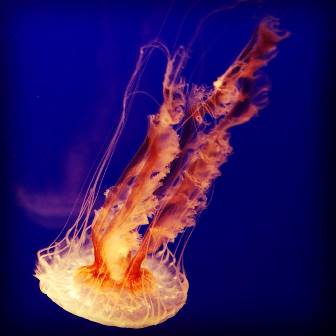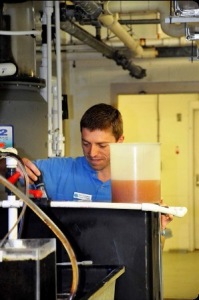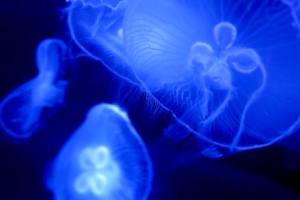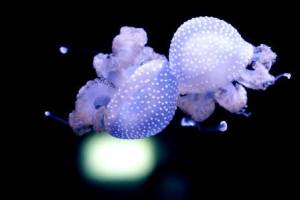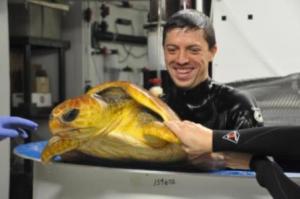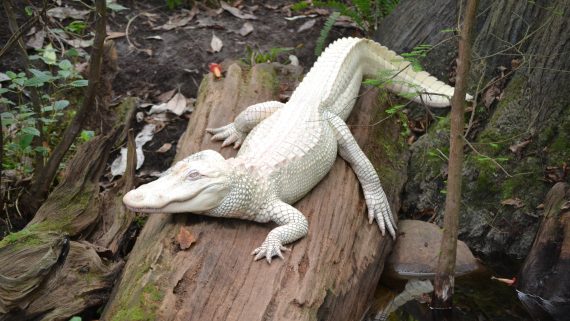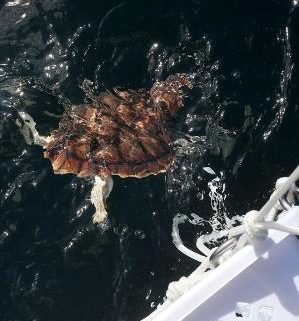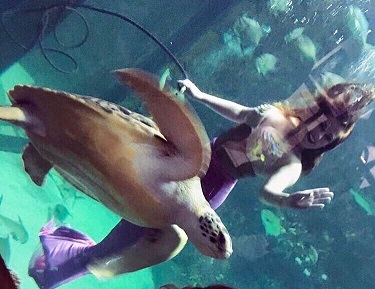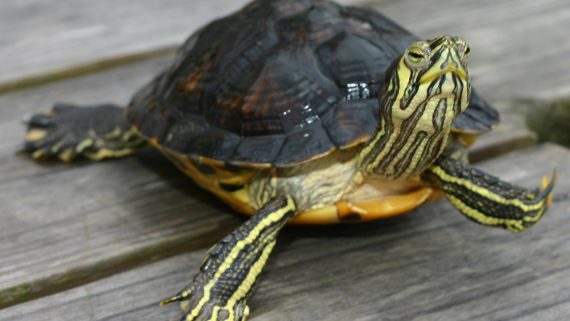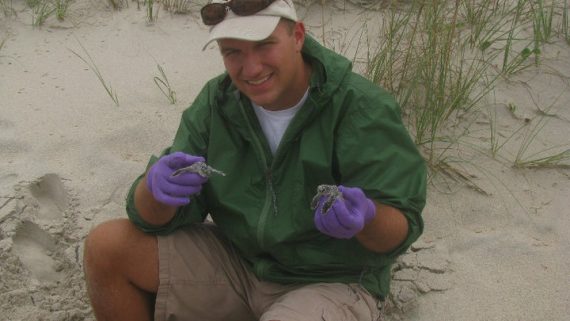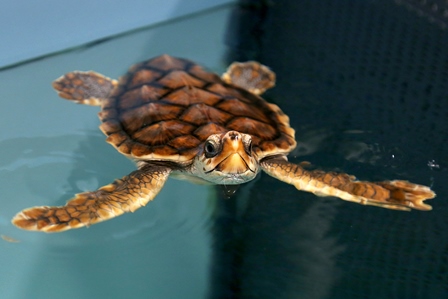No Peanut Butter With This Jelly!
This week we are interviewing Matt, an Aquarist and jellyfish expert at the NC Aquarium at Fort Fisher. Jellyfish are a sea turtle’s favorite food!
Q: What do you do at the N.C. Aquarium at Fort Fisher?
A: I care for all the jellyfish, our venomous snake collection, lobster/lionfish exhibit, poison dart frogs and our new resident bald eagle.
Q: How did you get your start at the Aquarium?
A: I attended the University of Maine at Orono and graduated in 2005 with a BS in marine biology. I moved to Wilmington in early 2006 and immediately stated volunteering at the Aquarium in husbandry [caring for the animals]. In September of that year, a position opened in horticulture as a technician. I wanted to do anything to get my foot in the door and I started working at the aquarium in horticulture [working with plants]. I did horticulture work for one year while still helping out in husbandry as much as I could before a spot became available in that department. When I transitioned to that department part of my section to take care of was the jellyfish systems.
Q: What’s something interesting most people don’t know about the Aquarium?
A: We propagate moon jellyfish Aurelia aureta for display purposes but also as a food source. Atlantic sea nettles (Chrysaora quinquecirrha) and loggerhead sea turtles that live at the Aquarium eat jellyfish, so we supplement their diets with moon jellyfish.
We also display and culture Australian White-spotted jellyfish (Phyllorhiza punctate) and can house them with similar species. I trade sea nettles for jelly fish with other aquariums. Trading between facilities is generally more economical than collecting specimens from the wild and it is also practicing more sustainable.
Q: What do you like about working with jellyfish?
A: I love working with the jellyfish. It is very satisfying to successfully maintain them on display and in cutlure systems. This animal has no heart, brain, eyes, or mobile appendages, and is essentially a swimming gut that is 98% water and is very sensitive to water quality. Unlike a fish in an aquarium, jellyfish for the most part need water current to keep them moving and off the bottom. Too strong a current can rip them to shreds, as they are very delicate. tIf the current is too weak , they can’t get the gas exchange through their tissues and catch enough food in the water column. Besides water flow which is a balancing act, they can’t have any air bubbles in the water, if they get any bubble trapped inside their bell “the body cavity” that air can basically dry them out from the inside and kill them.
Q: Do you ever get stung?
A: Yes, but I like a challenge and working with jellyfish can be challenging. So yeah you’re going to get stung but that’s what you get when you stick your arm in the water.
If you would like to talk more about what sea turtles eat check out this lesson plan: Sea Turtle Food Web. Our hatchlings are also still growing! This week Turtle A weighs 609 grams and is 16 centimeters long and Turtle B weighs 694 grams and is 16.7 centimeters long.


